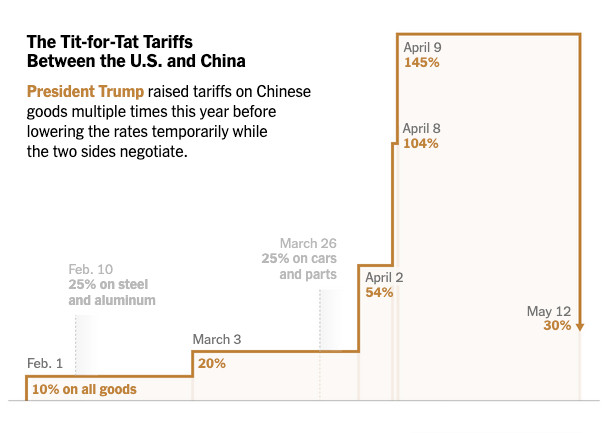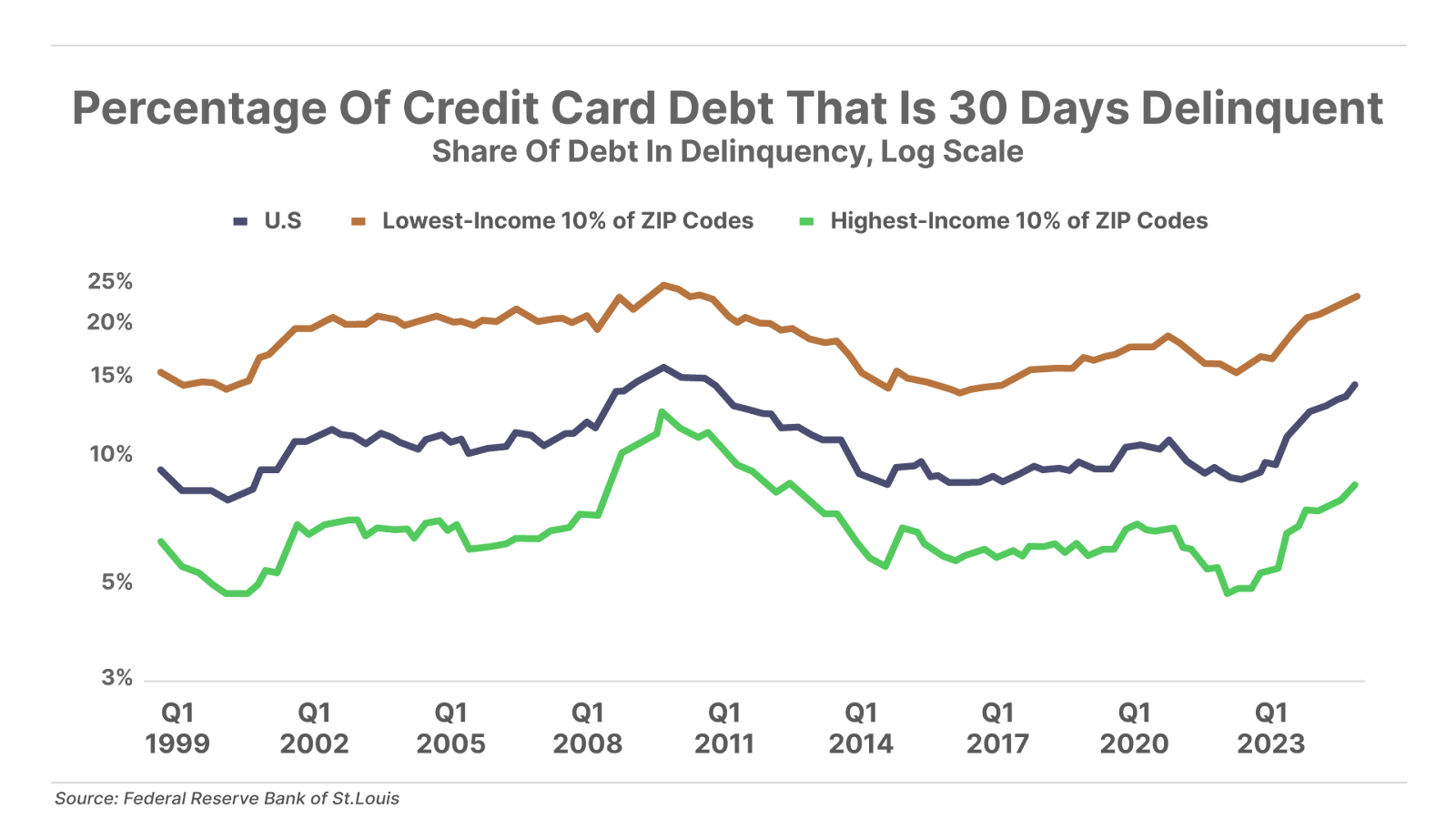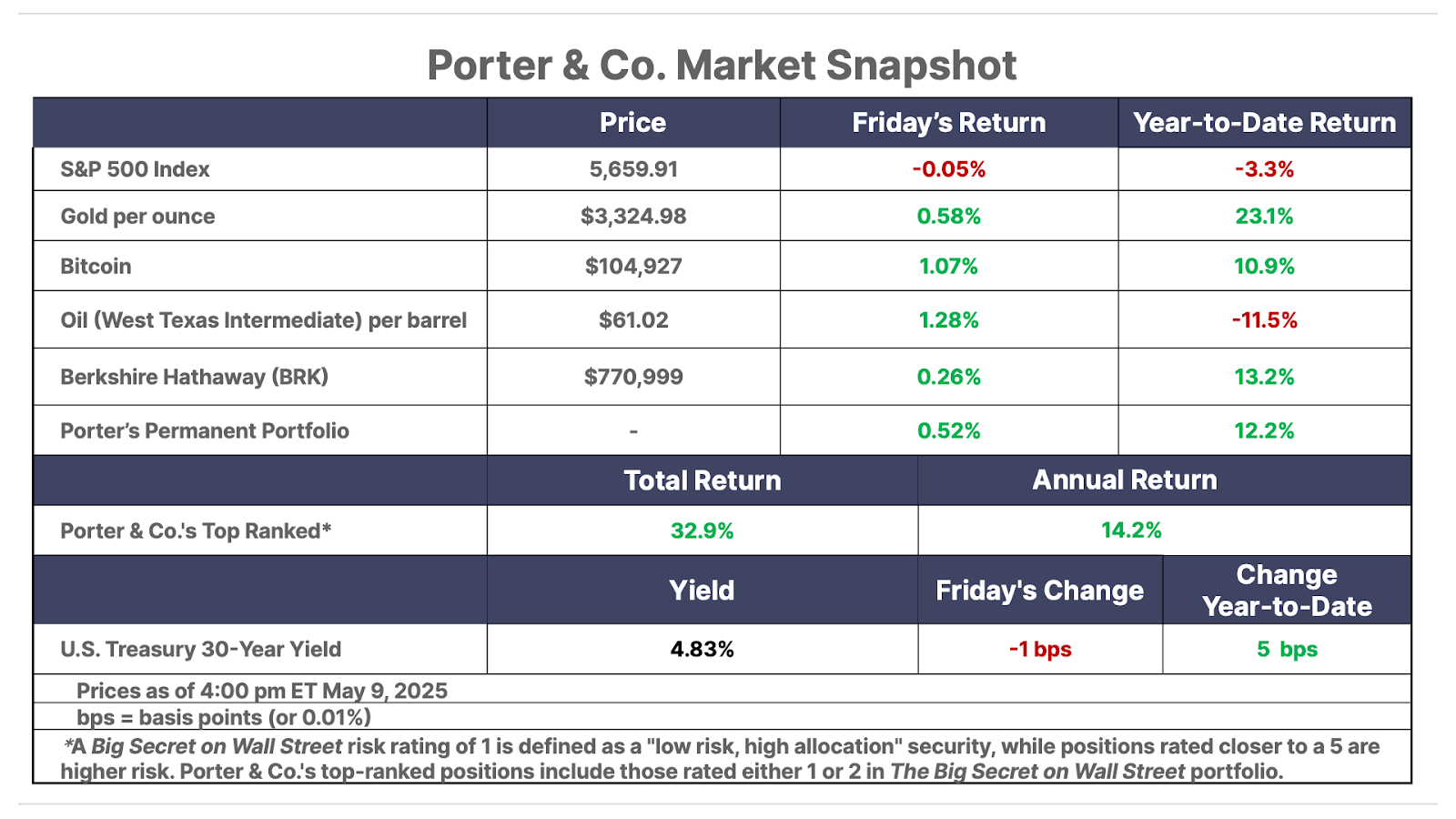Issue #54, Volume #2


How Not To Be Taken For A Ride In The Investing World
This is Porter’s Daily Journal, a free e-letter from Porter & Co. that provides unfiltered insights on markets, the economy, and life to help readers become better investors. It includes weekday editions and two weekend editions… and is free to all subscribers.
| Liar’s poker investment lessons… Asymmetric information leads to bad trading decisions… Insider trading and front-running are now illegal… Credit card delinquency – not just for the low-income cohort anymore… The U.S. and China pause their trade war, for now… |
In the October 23, 2024, Daily Journal (“Bonds And Liar’s Poker At Salomon Brothers”), Distressed Investing senior analyst Martin Fridson recounted his experiences with the colorful Salomon Brothers bond traders portrayed in Michael Lewis’s 1989 best seller, Liar’s Poker.
Just a few years before Lewis was at Salomon, flogging bonds and collecting material for what became his first of many best-selling books, Marty had been at Salomon, identifying profitable investment opportunities in the debt market.
The title of Michael Lewis’ book detailing these days comes from an often-high-stakes poker-like betting game played on the trading floor by the highly competitive characters in Salomon’s trading group.
The game involves betting on the digits in serial numbers on dollar bills as if they were suits or denominations on poker-playing cards.
It turns out that liar’s poker didn’t appear in the 1980s out of nowhere – it dates back to a Depression-era gangster film set in New York City.
Marty takes over from here…
In the 1933 movie Blondie Johnson, the title character played by Joan Blondell arrives in New York City with very little money but a great deal of courage.
She walks out of the train station and flags a taxi to take her to a cheap rooming house. At the end of the ride, Blondie strikes up a conversation with the cabdriver. She tells him he looks like the sporting type and makes him a proposition. They’ll compare dollar bills. If she has the better “hand,” her ride is free. If his bill is the better one, she’ll pay double the $2.40 fare.
The cabby agrees. He takes out his wallet and looks at his dollar bill and reports that he has a pair of twos – two of the number-two digit are in his serial number. “Four nines,” says Blondie and wins the game.
The cabdriver says: “You carry that bill around to sucker guys like me, right?”

After she admits to the hustle, he tells her to look to her right. There, Blondie sees the train station where she first got into the cab. Her rooming house is right across the street from the station. The cabby took advantage of a newcomer to the city by driving her around long enough to run up a fare, then dropped her off just a few feet from where he picked her up.
Financial theorists have a fancy name for the thing that snookered both Blondie and the cabbie – asymmetric information. It exists when one party in a transaction has more or better information than the other. The cabdriver didn’t know what Blondie knew about her dollar. Blondie didn’t know as much as the cabby did about New York, so she didn’t realize he was taking her for a ride, in more ways than one.
Asymmetric information is something you must avoid falling prey to as an investor.
One way to become a victim of asymmetric information is by making bets on the direction of interest rates. A study published in the American Economic Review found that the Federal Reserve possesses a lot of information about inflation, beyond what forecasters (or you) know. If investors had all of that information, a change in interest rates by the Fed wouldn’t come as a surprise to the market. Bond prices wouldn’t move significantly on the news. But as it is, even the most seasoned professional investors frequently get wrongfooted as a result of the Fed having an inside track on inflation data.
Another way of potentially setting yourself up to get dinged by asymmetric information is to start day trading stocks. You’ll be competing with professionals who employ highly sophisticated trading platforms and charting software. Unless you’re prepared to make the necessary financial investment and spend the time necessary to learn those complex systems, you’ll be playing on a non-level playing field… and likely making poor investments as a result.
The good news is that federal regulation, whatever shortcomings it may have in other instances, actually does a pretty good job of keeping financial information symmetric when your strategy consists of making long-term investments in good companies.
To begin with, the U.S. and most other countries have laws against insider trading. Suppose, for example, someone working within a company knows about a major new contract that hasn’t yet been announced to the public. By law, that employee can’t buy the stock before the press release that will certainly cause the stock to jump gets out – a privilege that wasn’t available to you or most other investors.
The prohibition on insider trading went on the books the year after Blondie Johnson reached the theaters. But for the first few decades it was routinely violated. Insiders passed along the vital nonpublic information to friends or relatives with little chance of getting caught. Law enforcement officials had little hope of identifying the unlawful “buy” order among the thousands of legitimate ones entered by investors who simply liked the stock based on information already well known to the public at large.
Things changed once computer technology became sufficiently advanced. At that point the Securities and Exchange Commission’s enforcement folks could find suspicious needle-in-the-haystack trading activity. Apprehending insider traders also got easier when Swiss banks agreed to strip away some of the secrecy surrounding their clients’ accounts.
Financial regulations prohibit another way of exploiting asymmetric information known as front-running. That’s where a brokerage firm knows – and you don’t – that a huge “buy” or “sell” order has arrived and will be executed shortly. The order is big enough to move the price of that company’s shares. So before executing it, a front-runner places a small order in the same stock for the firm’s own account, which would go along for the ride. That tactic would extract money from individual investors who aren’t in the know. But, of course, making that trade is illegal.
In short, much has happened since Blondie Johnson’s release to reduce the hazard of asymmetric information. You’re pretty safe as long as you’re basing your investment decisions on good old-fashioned fundamental research from a trustworthy source.
An interesting historical sidebar to the movie is that in one scene, after a mobster bumps off the gang’s old boss, he announces, “This is a new deal.” That’s a reference to – but with a very different meaning – the legislative package that President Franklin Roosevelt mentioned in his 1932 campaign and then launched after taking office in March 1933.
Some of Roosevelt’s New Deal laws still benefit investors today… rules aimed at ensuring symmetrical information in the securities market.
Elon’s Greatest Invention… Hidden In South Memphis?
Presented by Brownstone Research
Tech legend Jeff Brown recently traveled to the industrial zone of South Memphis to investigate what he believes will be Elon’s greatest invention ever…
Yes, even bigger than Tesla or SpaceX.
Click here now because after June 1st, it could be too late.
Three Things To Know Before We Go…
1. China and the U.S. announce temporary tariff reductions. Over the weekend, the U.S. and Chinese trade delegations, meeting in Switzerland, agreed to a 90-day reduction in reciprocal tariffs as they continue negotiations. The U.S. will cut its tariff rate on Chinese imports from 145% to 30%, while China reduced its tariff rate from 125% to 10%. Markets soared on the news, with the S&P 500 gaining 3% and the Nasdaq up by 4%.

2. Credit card delinquencies soar to five-year high. A growing share of Americans are missing credit card payments, and it’s not just the low-income cohort falling behind. In the lowest 10% of income zip codes, delinquency rates jumped from 14.9% in Q3 2023 to 22.8% in Q1 2025 – a 53% increase in under two years. But even in the wealthiest 10% of zip codes, delinquencies have climbed sharply, rising from 4.8% to 8.3% over the same period – a 73% spike. The signs of financial stress are spreading fast across all income groups and delinquencies are now approaching levels last seen during the 2008 financial crisis.

3. Don’t hold your breath for another Fed rate cut. The odds of a near-term rate cut have been plummeting following last week’s Federal Reserve meeting. According to the CME Group’s FedWatch tool, the probability of an interest rate cut at the Fed’s next meeting in June is now just 8% (versus 27% a week ago), while the probability of a cut in July is 39% (versus 56% last week). September is currently the first month where a rate cut is likely – with an 81.7% probability of one or more cuts – but even this could change if Wednesday’s upcoming consumer price index (“CPI”) report shows inflation moving higher.
And One More Thing… Those Ships Have Not Sailed
The number of shipping containers that arrived at the port of Los Angeles, the nation’s top container port, last week was one-third lower than during the same period last year – a sharper decline than during the depths of the Global Financial Crisis. More than 20% of the ships scheduled to tie up in L.A. this month have already canceled, and that number is expected to rise, even with the tariff pause over the weekend. Trump’s 145% tariffs on Chinese goods – and Beijing’s triple-digit retaliation – have brought a swift halt to the trans-Pacific flow of electronics, clothing, furniture, and industrial parts. Getting the flow of containers back to previous levels will take weeks, even months.
Good investing,
Martin Fridson
New York, New York


Please note: The investments in our “Porter & Co. Top Positions” should not be considered current recommendations. These positions are the best performers across our publications – and the securities listed may (or may not) be above the current buy-up-to price. To learn more, visit the current portfolio page of the relevant service, here. To gain access or to learn more about our current portfolios, call Lance James, our Director of Customer Care, at 888-610-8895 or internationally at +1 443-815-4447.
